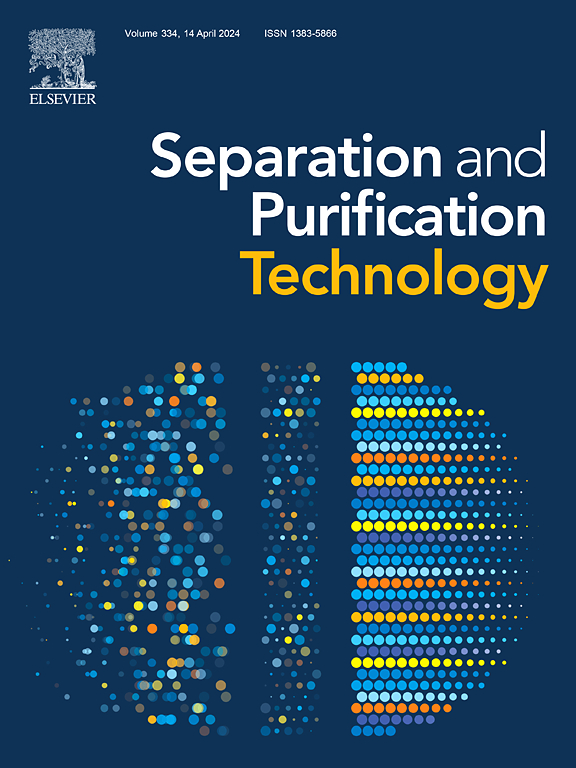Thermodynamic and kinetic Insights into impurity removal during electron beam drip melting of titanium Scrap: Toward sustainable High-Purity recycling
IF 8.1
1区 工程技术
Q1 ENGINEERING, CHEMICAL
引用次数: 0
Abstract
The removal of metallic (Fe, Ni, Al) and gaseous (O, N) impurities during electron beam drip melting (EBDM) of titanium scrap was systematically investigated through coupled thermodynamic analysis and mass transfer modeling. Under ultrahigh vacuum (<3 × 10-3 Pa) and localized overheating (up to 2400 K), Fe and Ni exhibited > 70 % removal via evaporation from free-falling droplets, governed by temperature-dependent evaporation coefficient (βFe ≈ βNi ≈ 10). Oxygen reduction (1290 → 290 ppmw) was attributed to TiO sublimation at melt surfaces, driven by Marangoni flow under Gaussian heat distribution. Kinetic studies revealed that impurity migration was controlled by liquid boundary layer diffusion (kmFe = 1.2 × 10-4 m/s at 2260 K), while thermodynamic equilibria defined deoxidation limits (C[O]* ≈ 200 ppmw at 25 kW). These findings advance the design of sustainable titanium recycling processes through fundamental chemical engineering principles.
废钛电子束滴熔过程中杂质去除的热力学和动力学研究:迈向可持续的高纯度回收
通过耦合热力学分析和传质建模,系统地研究了钛废料电子束滴熔过程中金属(Fe, Ni, Al)和气态(O, N)杂质的去除。在超高真空(<3 × 10-3 Pa)和局部过热(高达2400 K)下,Fe和Ni通过自由落体液滴的蒸发表现出 >; 70 %的脱除,这取决于温度相关的蒸发系数(βFe≈βNi≈10)。氧还原(1290 → 290 ppmw)归因于熔体表面的TiO升华,由高斯热分布下的Marangoni流驱动。动力学研究表明,杂质迁移受液相边界层扩散控制(在2260 K时kmFe = 1.2 × 10-4 m/s),而热力学平衡定义了脱氧极限(在25 kW时C[O]*≈200 ppmw)。这些发现通过基本的化学工程原理推进了可持续钛回收工艺的设计。
本文章由计算机程序翻译,如有差异,请以英文原文为准。
求助全文
约1分钟内获得全文
求助全文
来源期刊

Separation and Purification Technology
工程技术-工程:化工
CiteScore
14.00
自引率
12.80%
发文量
2347
审稿时长
43 days
期刊介绍:
Separation and Purification Technology is a premier journal committed to sharing innovative methods for separation and purification in chemical and environmental engineering, encompassing both homogeneous solutions and heterogeneous mixtures. Our scope includes the separation and/or purification of liquids, vapors, and gases, as well as carbon capture and separation techniques. However, it's important to note that methods solely intended for analytical purposes are not within the scope of the journal. Additionally, disciplines such as soil science, polymer science, and metallurgy fall outside the purview of Separation and Purification Technology. Join us in advancing the field of separation and purification methods for sustainable solutions in chemical and environmental engineering.
 求助内容:
求助内容: 应助结果提醒方式:
应助结果提醒方式:


